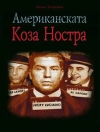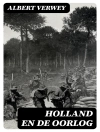The first intellectual and social history of American anarchist thought and activism across the twentieth century
In this highly accessible history of anarchism in the United States, Andrew Cornell reveals an astounding continuity and development across the century. Far from fading away, anarchists dealt with major events such as the rise of Communism, the New Deal, atomic warfare, the black freedom struggle, and a succession of artistic avant-gardes stretching from 1915 to 1975.
Unruly Equality traces U.S. anarchism as it evolved from the creed of poor immigrants militantly opposed to capitalism early in the twentieth century to one that today sees resurgent appeal among middle-class youth and foregrounds political activism around ecology, feminism, and opposition to cultural alienation.
Jadual kandungan
List of Figures
Acknowledgments
Introduction
PART I
THE DECLINE OF CLASSICAL ANARCHISM
1. Anarchist Apogee, 1916
2. The Red and Black Scare, 1917–1924
3. A Movement of Emergency, of Defense, 1920–1929
4. The Unpopular Front, 1930–1939
PART II
THE RISE OF CONTEMPORARY ANARCHISM
5. Anarchism and Revolutionary Nonviolence, 1940–1948
6. Anarchism and the Avant-Garde, 1942–1956
7. Anarchism and the Black Freedom Struggle, 1955–1964
8. New Left and Countercultural Anarchism, 1960–1972
Conclusion
Epilogue: From the 1970s to Occupy Wall Street
Notes
Index
Mengenai Pengarang
Andrew Cornell is an educator and organizer who has taught at Williams College, Haverford College, and Université Stendhal-Grenoble 3. He is the author of Oppose and Propose! Lessons from Movement for a New Society (AK Press).












